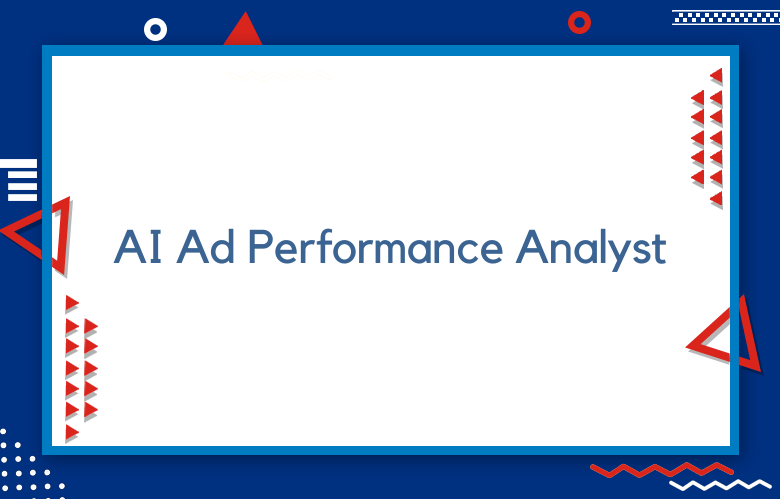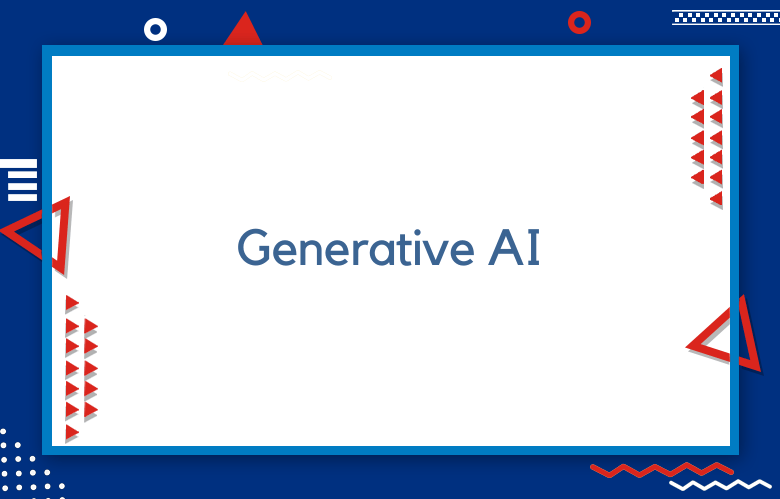AI Ad Performance Analyst: Predicting Ad Performance with AI

Do you want to guess whether your ad campaigns will succeed? Do you wish there was a way to predict ad performance before you spend your budget? Well, imagine if you could have an AI Ad Performance Analyst that does precisely that. Artificial intelligence has changed the game for digital marketing, and it’s time to utilize its power to increase your ROI.
First, let’s define an AI Ad Performance Analyst. AI can analyze past ad campaign data and run predictive models to determine the likelihood of success for future campaigns. It uses machine learning algorithms to identify patterns and trends in data, giving you insights that were impossible to see before.
With this technology, you can predict which ad creatives will perform best, which channels to run them on, and even what times of day to launch your campaigns.
The Importance of Predicting Ad Performance Using AI
Advances in technology have revolutionized the way businesses operate, particularly in the field of advertising. In recent years, artificial intelligence (AI) has emerged as a promising tool for predicting ad performance, giving companies an edge in creating effective marketing campaigns that reach their target audience and drive sales.
One key benefit of using AI to predict ad performance is the ability to harness big data and machine learning algorithms to analyze complex patterns and trends.
AI-powered tools can quickly process vast amounts of data, including demographic information, consumer behavior, and preferences, to create highly targeted ads that resonate with specific audience segments.
Leveraging Historical Data and Machine Learning for Ad Performance Prediction
In today’s digital age, advertising has become an integral part of businesses’ marketing strategy, with companies investing significant resources into their ad campaigns.
However, despite the vast amounts spent on advertising, measuring the efficacy of these campaigns is a complex task, leading companies to seek innovative solutions to predict their ad campaigns’ performance. On that note, leveraging historical data and machine learning has surfaced as one of the most effective methods to predict ad performance accurately.
Historical data can provide valuable insights into consumer behavior and the impact of past advertising campaigns on audience engagement. Companies can identify their strengths and weaknesses by analyzing previous campaign data, allowing them to make data-driven decisions in their upcoming ad campaigns.
Machine learning algorithms can also sift through immense datasets to detect patterns and trends, giving advertisers more nuanced insights into their audience demographics’ behavior, needs, and preferences.
Optimizing Ad Campaigns with AI-Powered Tools
In today’s digital era, not having a presence online for your business means you’re missing out on a massive opportunity. Marketing helps you reach potential customers and make a lasting impact on them.
The growth of artificial intelligence has revolutionized the advertising industry, providing businesses with the ability to optimize ad campaigns with AI-powered tools.
AI-powered tools have completely transformed how businesses approach advertising, and it has become essential to leverage these tools to keep up with the competition. Let’s explore how AI-powered tools can help marketers optimize their ad campaigns and achieve improved outcomes.
Predictive Analytics
Incorporating AI in ad campaigns has helped marketers by providing them with a reliable approach to predictions. Predictive analytics can help businesses analyze consumer behavior patterns, enabling them to create campaigns that resonate with their target audience.
By using predictive analytics, you can forecast ad success rates, determine which parts of the campaign require adjustments, and make empowered decisions before launching your campaign.
Ad Targeting
AI-powered tools have made targeting advertising specific and efficient, leading to better engagement rates. It allows marketers to reach the right audience at the right time, location, and device. AI targeting capabilities enable businesses to serve ads to the right customers based on their browsing behavior, interests, and demographics.
Real-Time Optimization
Although marketers often have data sets from past campaigns, they can still optimize real-time ad campaigns in a structurally consistent environment when necessary. AI-powered tools can make required adjustments to campaign budget allocation, change ad creatives, and adapt the movement to a more successful outcome.
Ad Personalization
AI-powered programs often require vast amounts of data to function optimally, and personalization has been the essential beneficiary of this influx. By targeting media preferences and behavioral history, AI can identify a user’s behavior patterns through learned algorithms, providing real-time recommendations for brands.
Ad Fraud Detection
Ad fraud is rampant in online advertising, and AI-powered tools can help identify those bot-driven, illegitimate clicks. It can monitor ad traffic, analyze patterns, and detect suspicious behavior while alerting advertisers. With fraud detection tools, marketers can be confident that their ad impressions and clicks are genuine and from actual customers.
The Role of Data in Predicting Ad Creative Performance
In today’s digital age, advertising has become essential to successful businesses. With the ever-increasing competition in the market, companies are constantly searching for ways to improve the efficiency of their ad campaigns. One of the critical elements of creating an effective ad is identifying and implementing the right creative approach that attracts the desired audience.
Data plays an integral role in predicting ad creative performance. Advertisers can determine which creative elements produce the desired results by analyzing metrics such as click-through rate (CTR), conversions, engagement rates, and more.
For instance, a study by AdEspresso found that ads with videos tend to have an average CTR of 1.84% compared to 0.82% for static images.
Training AI Models to Predict Ad Performance
As advertising becomes increasingly vital in modern business practices, companies are investing more and more money in online advertising campaigns.
To get the best return on investment, marketers must ensure their advertisements reach the right audience and grab their attention. With the advent of artificial intelligence (AI), marketers can leverage machine learning algorithms to predict ad performance accurately.
Training AI models to predict ad performance involves feeding the AI system with significant, relevant datasets. These datasets include past ad performance metrics and contextual information such as demographics, interests, behavior patterns, and search history.
Using this information, AI models can identify the characteristics most likely to result in successful ad delivery, such as age, interests, and location.
Predicting Ad Performance: Analyzing Historical Performance Data
Analyzing historical data is one of the most effective strategies for predicting ad performance. By carefully examining past ad campaign performances, we can gain valuable insights into what has worked well and what hasn’t. From there, we can make informed decisions about where to allocate resources for future campaigns.
However, it’s essential to remember that analyzing historical data requires nuance and attention to detail. We must consider specific metrics, such as click-through rates or conversions, broader consumer behavior trends, market conditions, and even factors like the time of year.
What worked last year may not necessarily be effective this year, so we must be careful to rely on something other than past performance data.
Key Data Points for Capturing Ad Clicks
Capturing ad clicks is essential for advertisers to evaluate the efficacy of their advertising campaigns. Advertisers must accurately capture critical data points to measure their ad campaigns’ performance. Advertisers need to charge The following significant data points to count ad clicks effectively.
Click-through rate (CTR)
Advertisers must measure CTR to determine the number of clicks on an ad divided by the total impressions. CTR helps measure the overall performance of the ad campaign.
Conversion Rate
The conversion rate measures the percentage of users who take a specific action on the website after clicking the ads, such as completing a form or purchasing. Advertisers can assess an ad campaign’s effectiveness by measuring the conversion rate.
Cost per click (CPC)
CPC determines the amount an advertiser pays for each click on their ad. A lower CPC indicates a more cost-effective ad campaign.
Ad Placement and Targeting
Ad placement and targeting are critical data points. Advertisers must know where their ads appear on the website and whether they target the right audience. Advertisers should review their ad placements and targeting regularly to ensure maximum performance.
Geographic Location
Knowing the geographic location of ad clicks is crucial for advertisers. This data point helps advertisers understand their current user base, which can help them identify new market opportunities and optimize their ad campaigns.
Considering Ad Format and Design in Performance Prediction
When it comes to predicting advertising performance, one crucial factor that is often overlooked is the ad format and design. Platforms like Facebook, Google, and Instagram provide various ad formats, including images, videos, carousels, and collections, each with unique design requirements.
For instance, an image ad on Facebook should be 1200 x 628 pixels and have a 20% or less text-to-image ratio, while a video ad on Instagram should be vertical and have a resolution of 600 x 750 pixels.
Ad format and design are crucial when predicting performance, as they can impact ad relevance, engagement rate, and conversion rate. Good ad design can grab the user’s attention and effectively convey the message, leading to higher engagement rates and better campaign performance.
Audience Data: Insights for Predicting Ad Creative Performance
The ability to predict the performance of ad creatives is of utmost importance for businesses and advertisers as it can significantly impact their bottom line. Understanding audience data is crucial in this regard, as it provides valuable insights into the preferences and interests of the target audience.
Audience data comprises various types of information, such as demographics, interests, behaviors, and psychographics. Demographic data includes age, gender, income, education, and occupation.
Magnets capture the topics and areas the audience is interested in, while behavior data tracks actions taken, such as website visits, clicks, and purchases. Psychographic data delves deeper into the audience’s personality traits, values, and attitudes towards various topics.
The Impact of Device, Platform, and Time on Ad Performance
Understanding the impact of device, platform, and time on ad performance has become increasingly important in digital advertising. With more people than ever relying on mobile devices to access the internet and engage with content, advertisers must pay close attention to how their ads perform on different devices and platforms.
With the prevalence of social media and the constant stream of information available to consumers, timing has emerged as a critical factor in determining the success of an ad.
Device is the most obvious factor to consider when evaluating ad performance. It is common knowledge that ads must be optimized for mobile devices to reach the widest audience possible. With over half of all internet traffic coming from mobile devices, failing to optimize an ad for mobile can result in missed opportunities for engagement and conversion.



